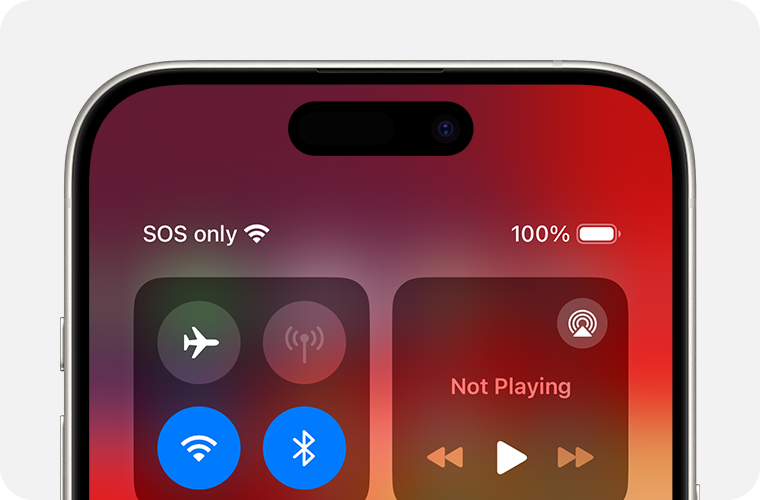Understanding the “SOS” Indicator on Your Phone
In today’s world, where smartphones have become an integral part of our daily lives, it’s not uncommon to encounter the “SOS” indicator on your phone’s display. This feature, designed for emergency situations, can be a source of confusion and concern for many users. In this comprehensive article, we’ll explore the purpose of the “SOS” indicator, how it works, and the various scenarios in which it may appear on your phone.
What is the “SOS” Indicator?
The “SOS” indicator is a feature found on most modern smartphones, including both iOS and Android devices. It is a quick and easy way for users to initiate an emergency call or send an emergency message to designated contacts in the event of a crisis or life-threatening situation.When the “SOS” indicator appears on your phone’s screen, it typically means that your device has detected a potential emergency situation and is ready to assist you in contacting emergency services or your pre-selected emergency contacts.
How Does the “SOS” Indicator Work?
The “SOS” indicator is typically activated through a specific sequence of button presses or gestures on your phone. The exact process may vary depending on your device’s operating system and manufacturer, but the general concept is the same.For example, on an iPhone, you can activate the “SOS” feature by rapidly pressing the side button five times. This will trigger the emergency call function and display the “SOS” indicator on the screen. On Android devices, the process may involve pressing the power button several times or using a specific gesture, such as long-pressing the power button.Once the “SOS” indicator is activated, your phone may perform a series of actions, such as:
- Initiating an emergency call to the local emergency services (e.g., 911 in the United States, 112 in Europe).
- Sending an emergency message to your pre-selected emergency contacts, providing them with your location and a request for assistance.
- Activating additional features, such as sharing your location with emergency services or playing an audible alarm to attract attention.
The specific actions taken by your phone will depend on your device’s settings and the emergency features enabled on your device.
Scenarios Where the “SOS” Indicator May Appear
The “SOS” indicator can appear in various situations, both intentional and unintentional. Understanding these scenarios can help you better interpret the presence of the “SOS” indicator on your phone and respond accordingly.
Intentional Use
The primary purpose of the “SOS” indicator is to provide a quick and easy way for users to initiate an emergency response in the event of a crisis, such as a medical emergency, a natural disaster, or a personal safety threat. In these situations, the user may intentionally activate the “SOS” feature to call for help and alert their emergency contacts.
Accidental Activation
Sometimes, the “SOS” indicator may appear on your phone due to accidental activation. This can happen if you inadvertently press the required button combination or perform the gesture to activate the “SOS” feature. This is more common in situations where the phone is in your pocket or bag, and the buttons are pressed unintentionally.
Network Issues
In some cases, the “SOS” indicator may appear on your phone due to network-related issues, such as a loss of cellular or Wi-Fi connectivity. When your phone is unable to establish a stable connection to the network, it may display the “SOS” indicator as a way to indicate that emergency services may still be accessible, even if regular communication is not possible.
Device Malfunctions
Rarely, the “SOS” indicator may appear due to a technical issue or malfunction with your phone’s hardware or software. This could be the result of a software bug, a hardware failure, or other unexpected device-related problems.
Responding to the “SOS” Indicator
If the “SOS” indicator appears on your phone, it’s important to assess the situation and respond accordingly. Here are some steps you can take:
- Determine the Cause: Assess whether the “SOS” indicator was activated intentionally or unintentionally. If you believe it was an accident, you may want to quickly deactivate the “SOS” feature to avoid unnecessary emergency responses.
- Check Your Phone’s Status: Examine your phone’s screen and any accompanying notifications or alerts to understand the current state of your device. This can help you determine if an emergency call has been initiated or if your phone is simply indicating a network issue.
- Contact Emergency Services (if Necessary): If you believe the “SOS” indicator was activated due to a genuine emergency, do not hesitate to contact the appropriate emergency services (e.g., 911 in the United States, 112 in Europe) immediately. Provide them with your location and any other relevant information.
- Notify Emergency Contacts: If your phone has the capability to send emergency messages to your pre-selected contacts, consider reaching out to them to inform them of the situation and your current status.
- Deactivate the “SOS” Feature (if Possible): If the “SOS” indicator was activated unintentionally, try to deactivate the feature as soon as possible to avoid unnecessary emergency responses. Consult your phone’s user manual or settings to learn how to do this.
- Troubleshoot Network Issues: If the “SOS” indicator appears due to network problems, try to reestablish a stable connection by moving to a different location, turning your phone off and on, or checking your network settings.
- Seek Technical Assistance: If the “SOS” indicator persists or you suspect a device malfunction, consider contacting your phone’s manufacturer or a qualified technician for further assistance.
Preventive Measures and Settings
To minimize the risk of accidental “SOS” activation and ensure the proper functioning of this feature, it’s important to familiarize yourself with your phone’s settings and take the following preventive measures:
- Understand Your Phone’s “SOS” Activation Process: Review your phone’s user manual or settings to learn the specific steps required to activate the “SOS” feature. This will help you avoid accidentally triggering it.
- Customize Emergency Contacts: Most smartphones allow you to pre-select emergency contacts who will be notified when the “SOS” feature is activated. Ensure that these contacts are up-to-date and that you have their consent to be included in your emergency plan.
- Disable Accidental Activation: Some phones offer the option to disable the “SOS” feature or adjust the button combination required to activate it. Explore these settings to prevent unintentional activation.
- Regularly Test the “SOS” Feature: Periodically test the “SOS” feature to ensure it is functioning correctly and that your emergency contacts are receiving the necessary information.
- Educate Family and Friends: Make sure your loved ones are aware of the “SOS” feature and how to respond if they receive an emergency notification from your phone.
By understanding the purpose of the “SOS” indicator, being mindful of the scenarios in which it may appear, and taking proactive steps to manage its settings, you can ensure that this important safety feature remains a reliable tool in times of need.
FAQ
Q: What does the “SOS” indicator on my phone mean?The “SOS” indicator on your phone is a feature designed to help you quickly initiate an emergency call or send an emergency message to your pre-selected contacts in the event of a crisis or life-threatening situation.
Q: How do I activate the “SOS” feature on my phone?The process for activating the “SOS” feature varies depending on your phone’s operating system and manufacturer. On an iPhone, you can typically activate it by rapidly pressing the side button five times. On Android devices, the process may involve pressing the power button several times or using a specific gesture.
Q: What happens when I activate the “SOS” feature?When you activate the “SOS” feature, your phone may perform a series of actions, such as:
- Initiating an emergency call to the local emergency services
- Sending an emergency message to your pre-selected contacts with your location
- Activating additional features, such as sharing your location or playing an audible alarm
Q: Can the “SOS” indicator be activated accidentally?Yes, the “SOS” indicator can sometimes be activated accidentally, especially if your phone is in your pocket or bag and the required button combination is pressed unintentionally.
Q: What should I do if I accidentally activate the “SOS” feature?If you accidentally activate the “SOS” feature, try to deactivate it as soon as possible to avoid unnecessary emergency responses. Consult your phone’s user manual or settings to learn how to do this.
Q: Can the “SOS” indicator appear due to network issues?Yes, in some cases, the “SOS” indicator may appear on your phone due to network-related issues, such as a loss of cellular or Wi-Fi connectivity. This is the phone’s way of indicating that emergency services may still be accessible, even if regular communication is not possible.
Q: What should I do if the “SOS” indicator appears on my phone?If the “SOS” indicator appears on your phone, assess the situation and respond accordingly. Determine the cause, check your phone’s status, contact emergency services if necessary, notify your emergency contacts, and try to deactivate the feature if it was activated unintentionally.
Q: How can I prevent accidental “SOS” activation on my phone?To prevent accidental “SOS” activation, you can:
- Understand your phone’s “SOS” activation process
- Customize your emergency contacts
- Disable the “SOS” feature or adjust the button combination required to activate it
- Regularly test the “SOS” feature
- Educate your family and friends about the “SOS” feature
For a more detailed look at the eclipse visibility and timing in your specific location, you can use this interactive map from the National Oceanic and Atmospheric Administration (NOAA).



